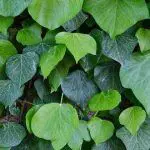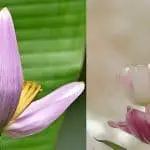Based on the movement of pollen from anther to stigma, we can categorise the pollination process into two categories- Self and Cross-Pollination. At the time of self-pollinations, the pollen travels from stigma to anther of the flower of the same plant. Whereas during cross-pollination, these movements occur between the anther and stigma of two different … [Read more...] about Difference Between Self-Pollination and Cross-Pollination
Botany
Difference Between Simple and Compound Leaves
Leaves perform crucial functions like photosynthesis, storing food and water etc. But they can vary in their shapes, sizes, colours, arrangements, and patterns based on different environmental conditions. On the basis of these differences, we can broadly classify the leaves as-Simple and Compound. The simple leaves are the one which bears a single leaf blade or lamina that … [Read more...] about Difference Between Simple and Compound Leaves
Difference Between Cellular Respiration and Photosynthesis
Cellular respiration takes place in the every living organisms, as it is the simple process of converting oxygen and glucose into carbon dioxide and water and ultimately producing energy for the cells of the body. On the contrary, photosynthesis occurs in green plants, which contain chlorophyll and uses sunlight and water to convert it into energy. These are the two … [Read more...] about Difference Between Cellular Respiration and Photosynthesis
Difference Between Parallel and Reticulate Venation
In a plant, the veins of the leaf blade or lamina exhibiting the parallel pattern from the base to the tip is known as the parallel venation, on the contrary, when the veins of the leaf blade or lamina in the plants exhibit the web like or net-like pattern on both side of the midrib is known as the reticulate venation. In a leaf, the arrangement of veins is called as … [Read more...] about Difference Between Parallel and Reticulate Venation
Difference Between Monocotyledons (monocots) and Dicotyledons (dicots)
The seed in the plant having one cotyledon is called as the monocotyledon, while the seed in the plant having two cotyledons is named as the dicotyledon. Ginger, banana, wheat, maize, palm, onion, garlic are few examples of monocotyledonous plants, while rose, groundnut, potato, tomato, pea, eucalyptus, hibiscus are the examples of dicotyledonous plants. Knowing the family … [Read more...] about Difference Between Monocotyledons (monocots) and Dicotyledons (dicots)





